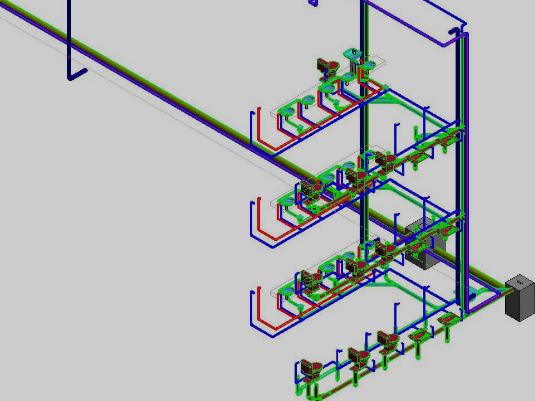Navigating MEP Design and Accessibility Compliance
Navigating MEP Design and Accessibility Compliance in Florida’s Public Buildings
As Florida grows, ensuring public buildings meet both MEP (Mechanical, Electrical, and Plumbing) standards and accessibility requirements becomes increasingly important. Balancing innovation with regulations can be challenging for architects, engineers, and facility managers. This guide breaks down the essentials of MEP design and accessibility, focusing on the ADA and Florida Building Code.
1. Introduction to MEP Design and Accessibility Compliance
MEP systems form the backbone of any public building, ensuring comfort, safety, and functionality. In Florida, the diverse population and climate demand thoughtful MEP design. These systems must also support accessibility features that promote inclusivity.
The Americans with Disabilities Act (ADA) and Florida Building Code set clear guidelines for public access. MEP systems play a key role in supporting accessible restrooms, elevators, and walkways. This guide explores how MEP design intersects with accessibility and how to navigate both effectively.
2. Understanding MEP Systems: An Overview
MEP systems are essential for any well-designed public building. They ensure functionality, safety, and comfort.
Mechanical Systems
Mechanical systems manage heating, ventilation, and air conditioning (HVAC). In Florida’s humid climate, efficient HVAC design isn’t just important—it’s vital. Proper ventilation supports air quality and comfort. Load calculations and energy-efficient measures are key to meeting local codes.
Electrical Systems
Electrical systems include lighting, power distribution, and emergency circuits. These systems must support both safety and accessibility. For example, outlets and lighting controls should be within reach and comply with ADA guidelines.
Plumbing Systems
Plumbing systems ensure clean water supply and safe waste removal. They also support accessible bathrooms, including sinks, toilets, and emergency features like eye wash stations.
3. Importance of Accessibility in Public Buildings
Accessibility is more than a legal requirement—it’s a reflection of inclusive values. Florida’s public spaces must accommodate all residents, regardless of physical ability. Features like ramps, tactile signage, and wide pathways empower people with disabilities to participate fully in daily life.
Well-designed spaces not only comply with the ADA but also improve overall usability. Accessible design helps everyone, from elderly individuals to parents with strollers.
4. Key Legislation Governing Accessibility in Florida
Understanding the key legislation governing accessibility in Florida is crucial for ensuring that MEP (Mechanical, Electrical, and Plumbing) design in public buildings meets the necessary compliance standards. Florida’s commitment to accessibility is rooted in both federal and state laws that mandate equal access for all individuals, regardless of their physical abilities.
At the federal level, the Americans with Disabilities Act (ADA) serves as the cornerstone of accessibility legislation. Enacted in 1990, the ADA outlines comprehensive requirements for public accommodations, ensuring that facilities are accessible to individuals with disabilities. This includes specifications for accessible routes, entrances, restrooms, and signage—all of which directly influence MEP design considerations.
5. The Role of MEP Design in Accessibility Compliance
MEP systems must support accessibility from the ground up. These systems influence how people experience buildings, including those with mobility or sensory impairments.
For example, HVAC systems should be quiet and offer air quality control for sensitive users. Electrical components like thermostats and lighting must be reachable and easy to operate. Plumbing systems should support accessible restroom design, with grab bars, lever handles, and proper fixture spacing.
6. Common Accessibility Challenges in MEP Design
Designing mechanical, electrical, and plumbing (MEP) systems in Florida’s public buildings comes with a unique set of challenges, particularly when it comes to ensuring accessibility compliance. Understanding these common accessibility challenges is crucial for architects, engineers, and facility managers alike.
One of the primary obstacles is the integration of MEP systems within the existing structural framework. Public buildings often have unique architectural features that may limit space for essential systems. For instance, ductwork, piping, and electrical conduits need to be strategically routed to avoid encroaching on accessible pathways or maneuvering spaces, which are critical for individuals with mobility impairments. Inadequate space can lead to convoluted layouts that complicate maintenance and reduce overall accessibility.
Additionally, the height and location of light switches, outlets, and thermostats pose significant challenges. These fixtures must be positioned within reach of individuals who use wheelchairs or have limited reach, adhering to the standards outlined in the Americans with Disabilities Act (ADA). However, achieving this often requires careful planning and consultation with accessibility experts to ensure compliance while still maintaining the functional integrity of the building’s systems.
7. Essential MEP Design Elements for Accessibility
When it comes to ensuring accessibility in Florida’s public buildings, the integration of essential Mechanical, Electrical, and Plumbing (MEP) design elements cannot be overlooked. Accessibility is not just a legal requirement; it’s a moral obligation that reflects a commitment to inclusivity and safety for all individuals, including those with disabilities.
Mechanical Systems
In designing mechanical systems, consider the placement and accessibility of HVAC controls. Thermostats and air conditioning controls should be installed at an accessible height, allowing individuals in wheelchairs or those of shorter stature to reach them without difficulty. Additionally, the design should incorporate adequate ventilation and air circulation in all accessible areas, ensuring that everyone can enjoy a comfortable environment.
Electrical Systems
Electrical components must also be designed with accessibility in mind. This includes ensuring that light switches, electrical outlets, and emergency alarms are positioned within reach of individuals with various mobility challenges. Implementing tactile and audible signals at elevators and doorways can enhance safety and navigation for those with visual impairments. Furthermore, consider the installation of automatic doors or sensor-activated lighting that responds to movement, reducing the need for physical exertion and enhancing usability.
Universal Design Principles
Incorporating universal design principles into MEP systems not only enhances accessibility but also promotes an inclusive environment. This means designing spaces that are usable by all people, regardless of their age, size, or ability. Engaging with stakeholders—including individuals with disabilities—during the design process can provide valuable insights into their specific needs and preferences, leading to a more thoughtful and effective approach to MEP design.
8. Collaborating with Architects and Engineers
Collaboration is at the heart of successful MEP (Mechanical, Electrical, and Plumbing) design, especially when it comes to accessibility compliance in Florida’s public buildings. Working alongside architects and engineers is not just beneficial; it’s essential for creating spaces that are not only functional but also inclusive and welcoming to all individuals, regardless of their physical capabilities.
First and foremost, establishing open lines of communication between all parties is crucial. Early discussions can help identify any potential barriers to accessibility, ensuring that everyone is on the same page from the outset. Architects bring a vision for the space, while engineers provide the technical expertise needed to realize that vision. Together, they can craft designs that seamlessly integrate MEP systems while adhering to the Americans with Disabilities Act (ADA) guidelines and Florida’s state regulations.
9. Conducting Accessibility Assessments
Accessibility assessments help identify and eliminate potential barriers in public buildings. These evaluations check for compliance with ADA and state codes. They also consider ease of use.
During the assessment, evaluate door widths, ramps, signage, and fixture placement. Make sure furniture does not block pathways. Proper assessments support both legal compliance and an inclusive experience for all users.
10. Best Practices for MEP Design in Compliance with ADA
When it comes to MEP (Mechanical, Electrical, and Plumbing) design, ensuring compliance with the Americans with Disabilities Act (ADA) is not just a legal requirement—it’s a commitment to creating inclusive public spaces that cater to everyone. Implementing best practices in your MEP design can significantly enhance accessibility, providing comfort and convenience for all users.
First and foremost, consider the layout and location of mechanical equipment. Ensure that HVAC systems are designed to accommodate individuals with mobility challenges. This might include placing controls within easy reach and ensuring that there is sufficient clearance around equipment for wheelchair access. When designing restrooms, incorporate accessible plumbing fixtures such as grab bars, lever-operated faucets, and toilets with sufficient space for maneuverability.
Electrical design also plays a crucial role in ADA compliance. Install light switches and outlets at accessible heights, ensuring that they can be reached by individuals in wheelchairs or those who may have difficulty standing. Utilize visual and audible alarms in emergency systems, so all occupants, regardless of their hearing or sight capabilities, are alerted in the event of an emergency.
In conclusion, navigating MEP design and accessibility compliance in Florida’s public buildings is a multifaceted endeavor that requires careful consideration and thorough understanding of both technical specifications and regulatory standards. By adhering to the guidelines outlined in this comprehensive guide, architects, engineers, and facility managers can create spaces that not only meet legal requirements but also enhance the overall user experience for all individuals, regardless of their abilities. As you embark on your projects, remember that prioritizing accessibility is not merely a compliance checkbox; it’s a commitment to inclusivity and community well-being. We hope this guide empowers you to innovate and excel in your designs, ultimately contributing to a more accessible and welcoming environment for everyone in Florida. Thank you for reading, and we encourage you to share your experiences and insights with us as we continue to advocate for excellence in MEP design and accessibility!
Learn more: https://www.wbdg.org/design-objectives/accessible/best-practices-accessibility-compliance
Visit : https://gdiengdesign.com/gdiengdesign-mep/

















































